Individuals can make an immediate difference in the quality of their lives and the environment by gardening in their backyards. Many small and large gardens throughout the community can produce fresh vegetables and fruit. You can ease into gardening at your own pace when you break your project down into manageable steps. Your efforts will soon be rewarded with beautiful views, delicious flavors, and colorful blooms. The following steps will help you start from scratch, but a garden plan could also be helpful if you have something specific.
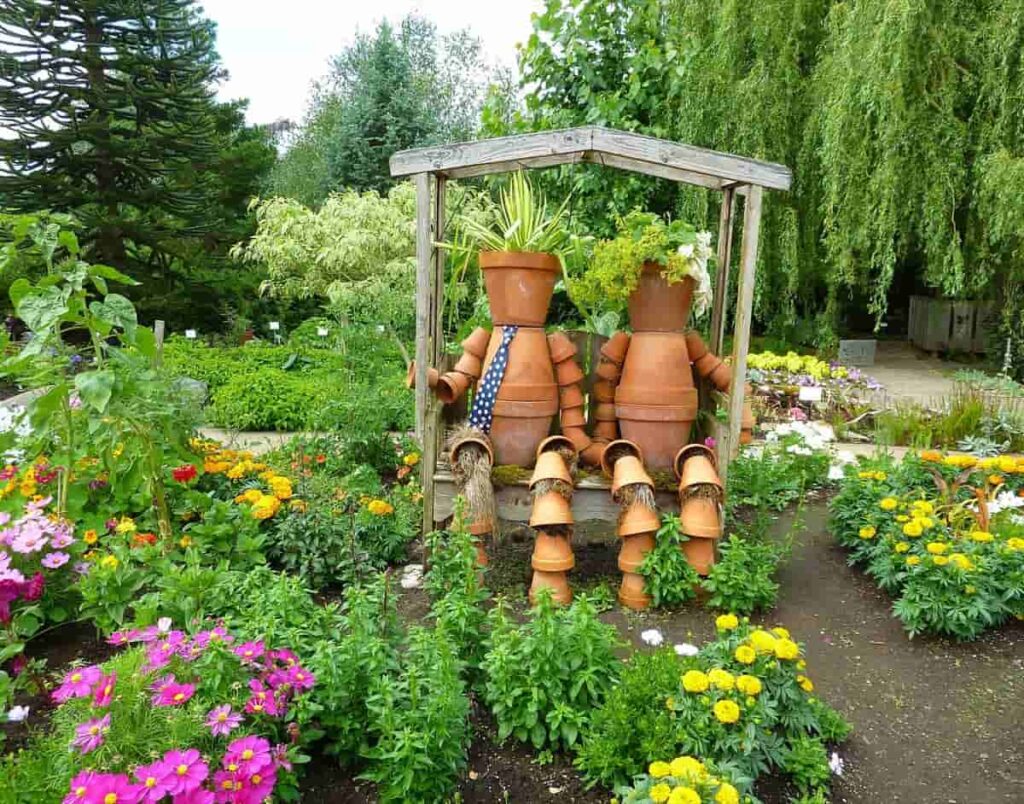
Backyard gardening basics
Determine your climate zone
Putting the right plant in the right spot at the right time is the key to gardening success. The first step is to understand what crops are suited to your climate zone and when to plant them. Next, discover what fruits, vegetables, flowers, and herbs thrive in your climate. Next, look up the estimated first and last frost dates for your climate zone to determine the length of your growing season. You can then look for plants labeled with the zone number you belong to at your local garden center. In addition, if you are buying seeds, compare the days to maturity on the seed packet with your growing season.
Decide what to grow
Your personal preferences and the constraints of your climate zone will determine which plants you can grow. First, decide what kind of garden you want: a flower garden, a vegetable garden, a herb garden, a container garden, or a combination of several types. Plan your garden around fruits and vegetables that you enjoy eating. Consider your available space for home gardening as well. It is best to avoid large plants in a small garden if you don’t have much space.
A beautiful sea of flowers, an abundance of herbs, a kitchen garden for the budding chef in you, or a nutritious vegetable garden to keep you fit and healthy will enjoy. Regardless of your choice, try to paint a picture of your perfect garden with little steps. For example, some plants prefer direct sunlight, and some plants prefer shade. This information may be found on the seed package of the plant. In addition, you can make their lives much easier by picking native plants in your area.
Choose the ideal garden location
Choosing the right location for your garden is crucial. Flowers and vegetables need several hours of direct sunlight daily, so plant them in an area that receives enough full sun. Providing wind protection will also make it easier to grow plants. The best way to achieve big wins is to take small steps. The first step in building a garden is to choose a small area. Next, choose a space that receives at least 5-6 hours of direct sunlight daily. Last, consider the ease of watering, picking, and maintaining the garden space.
In case you missed it: How to Start Home Gardening in Asia: For Indoors, Outdoors, Raised Beds, Backyards, Terrace, Pots, and In Containers for Beginners
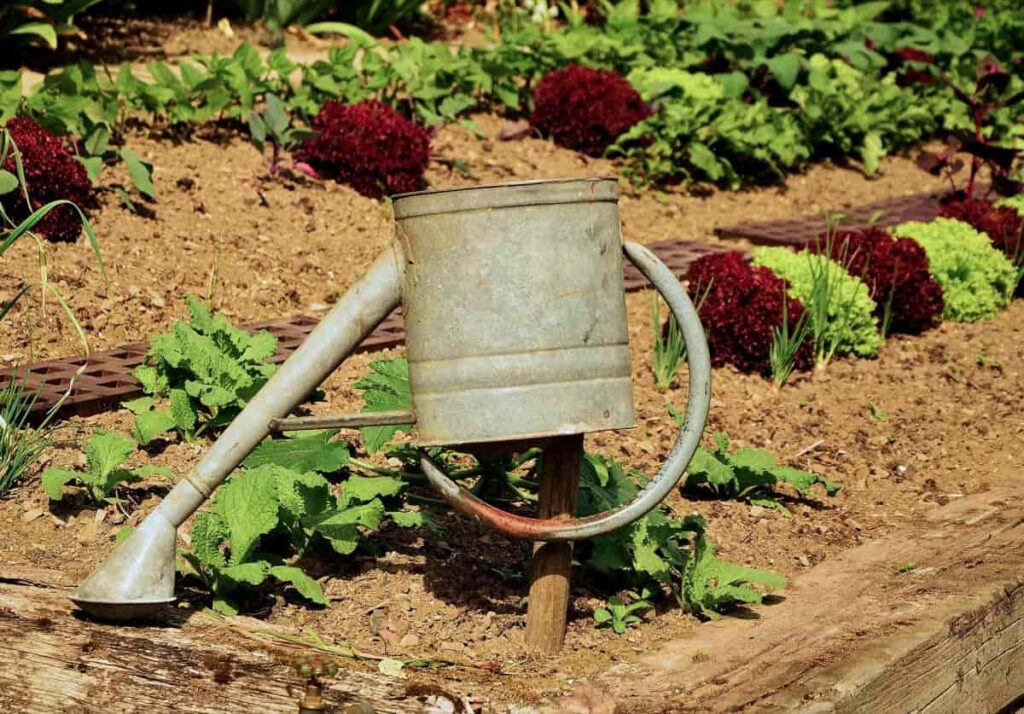
Drains well and does not stay wet
You can improve drainage by planting vegetables in raised beds or rows if your soil is poorly drained. Water-logged soil can lead to rotted roots due to wet roots. It is best to till and remove rocks from rocky soil to help your plants grow stronger, as the rocks will interfere with the root system and cause them to be weaker.
Stable and not windy
Avoid places where strong winds could knock over your young plants or stop pollinators from doing their jobs. It’s also best not to plant in an area that receives too much foot traffic or floods frequently.
Nutrient-rich soil
Your plants rely on soil for nutrition. With thin, nutrient-poor soil, you will have poor, unhealthy plants. Instead, give the plants plenty of organic matter to help them grow.
Acquire basic gardening tools
A sturdy shovel and a pair of gloves are at least necessary when starting a garden. But there are several other tools of the trade that might come in handy:
- To dig the holes for your plants, you will need a spade and trowel
- You can easily fill pots and planters with this potting soil scoop
- When harvesting vegetables, use a standard kitchen knife to make precise cuts.
- Use a battery-powered or rechargeable cordless drill to make drainage holes when converting found objects into planters.
- The Hori Hori knife is useful for dividing the garden’s root clumps and other coarse tasks.
- Cut stems and branches up to half an inch in diameter with a pair of hand pruners
- A small pruning saw designed for pruning trees and shrubs in tight spaces.
- Using a garden fork, you can break up large clumps of soil or remove old weeds and plants’ roots.
- For watering the plants, use a watering can or hose.
Test your soil
Nutrient-rich gardening soil is always beneficial to plants. Ensure the soil is healthy before planting a garden. Furthermore, you will learn whether your pH level is off, whether you have any nutrient deficiencies, and the proportion of clay, sand, silt, and organic matter in your garden soil. If any imbalances exist in the soil, correct them with amendments. Soil quality improvements are not as hard as you think; they have many benefits. Make organic compost from tea compost and vegetable peels to improve the quality of your soil.
In case you missed it: Top 50 Basic Gardening Tips for Beginners: That Every Gardener Should Know
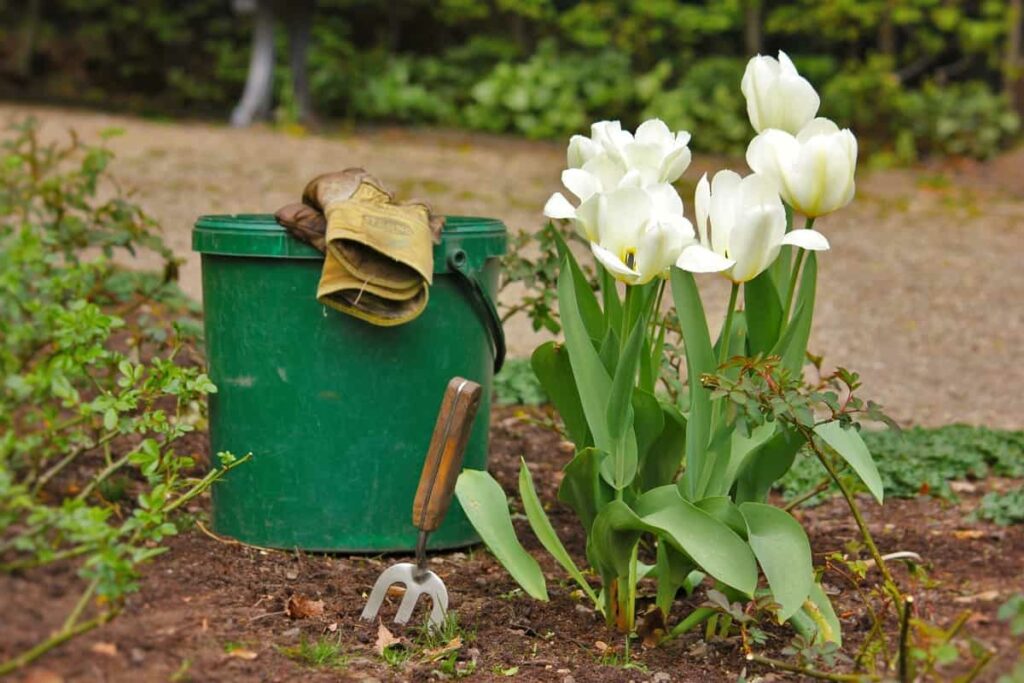
Ask for a soil test that covers toxic substances like arsenic and lead that may be found in the soil. Do not plant edibles in soil that contains toxins above safe levels. Instead, grow your food in wooden raised beds with a barrier on the bottom to prevent roots from getting into the ground. All plants will have difficulty growing roots if your soil is hard and clay-like. Alternatively, if you have rocky soil, you should till it and remove the rocks.
Make your garden bed
Clearing the current vegetation is the first step in creating a garden bed. Hand-pulling is an effective method of removing weeds. Ensure the roots are removed so that they won’t resprout. Renting a gas-powered sod cutter may be necessary if you start with a lawn. The next step is to prepare your plating area. Tilling should be avoided unless necessary. As a result of digging, worms, beetles, and bacteria can be disrupted, which is unfavorable.
Instead, consider no-till gardening: After removing debris and grass from the growing area, spread a four-inch thick layer of compost on the area. Composting weeds with sheet mulch or cardboard can eliminate stubborn weeds while preserving soil structure. Having completed the planning, decide on the type and size of the garden beds. It is easier to work in a garden with raised beds, which are attractive.
The beds should not be wider than 4 feet, so you can reach the center without stepping on the soft soil and compacting it, undoing all your efforts. Blocks or beds are more convenient than single rows for gardening. Prepare your beds about 8-10 feet long so you can easily move around without stepping on the plants. Provide its own space for each plant to grow and start small.
While small seeds and transplants, fully-grown plants can get big, making the area overcrowded and difficult for the plants to thrive. Instead, arrange your greens in rows or a grid pattern within the garden beds. It is important to minimize walkways and maximize growing space. Feeding fertilizer and soil amendments to the planting spot saves you time and money.
Decide whether to grow from seed or transplant seedlings
It is possible to save money by starting your seeds, but it is a long and potentially frustrating process. Some seeds sprout slowly; others develop into healthy plants ready for the harsh outdoors. You can purchase young plants grown in a commercial greenhouse at your local nursery. However, it is crucial to remember that you do not necessarily want the largest plants in the batch, as these are often root-bound. As a result of a dense thicket of roots under the soil, these seedlings may not transition well from pots to gardens.
Plan it out
Before starting to plant the seedlings or sowing seeds, plan it out.
Planning: Pay attention to the spacing between each plant when mapping out where it will go. It is equally important for plants to have their own space, just as it is for us. Overcrowding young plants can affect their growth, make them more susceptible to diseases, or even kill them.
Labeling: Place small labels alongside your plants to ensure you know what and where they are planted in your garden. Plant labels can also be creative, and you can create unique ways to label them.
In case you missed it: Urban Gardening Ideas for Beginners: Tips, Tricks, and Techniques
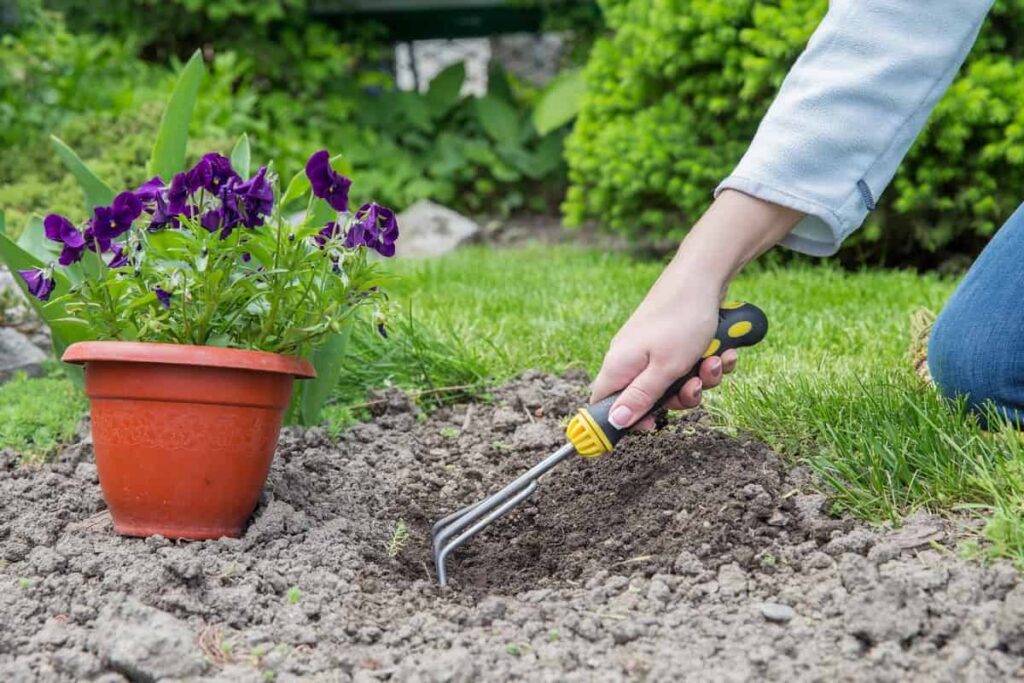
Plant your seeds or seedlings with care
As soon as you have laid the groundwork, you can start planting. Basic planting instructions are included with most seed packets. If you try it, you won’t take long to master the art of planting. First, ensure seeds are sown at the proper depth, tamp the soil firmly over them with the palm of your hand, and water them whenever the surface dries out. Next, you should carefully turn the pot over while holding the stem between your fingers as you plant seedlings.
Finally, the pot should be gently squeezed on all sides and shimmed off. Massage the soil lightly until the roots are no longer stuck in the shape of the pot after you grasp the mass of soil in your hands. Using a knife to loosen the roots may even be necessary if the plant is rootbound. Finally, create a hole in the soil no larger than the root mass using your hands or a small trowel.
Cover the roots of the plant with soil, ensuring not to cover the stem in the process, which is a death sentence for many plants. Press the plant firmly into the soil. Plants should be planted in conditions that are conducive to their growth. For example, sun-loving plants should be planted in sunny spots, heat-tolerant plants should be chosen in warm climates, and vines that feed on the ground, such as pumpkins and melons, must be given ample elbow room or a trellis.
Water sufficiently
Watering your plants is the key to keeping them alive, but overwatering them can lead to waterlogging, damaging them. Plants require an inch of water per week during the growing season. Make sure you provide sufficient water if there hasn’t been any rainfall. A simple way to determine if plants are thirsty is to stick your finger two inches deep into the soil. Watering is most likely necessary if the ground feels dry.
Remember that most plants are better off slightly dry than completely soaked. In addition, it is possible to affect roots by root rot due to overwatering. Slow watering your plants allow the water to penetrate deep into the soil. The soil should be moist, about 3-4 inches below the surface.
In the summer heat, plants require more water. In addition, different stages of development require different amounts of water for plants. Depending on the weather conditions, young plants will need to be watered every day to encourage growth and healthy roots, while mature plants will need to be watered once every 2-3 days, depending on their stage of development.
Use mulch liberally
The mulch feeds the soil with nutrients and protects it from erosion. As a covering for soil, mulch is any material spread or laid over it. Keeping the soil moist and warm with rocks and organic matter prevents weeds from germinating, and the earth stays cool and moist. Mulch is also a favorite of worms and other beneficial soil creatures; just like compost, it becomes fuel for the soil food web as it decays.
Each crop requires a different type of mulch. Fruit trees, shrubs, perennial flowers, and other large, long-lived plants do well with wood chips. Light mulch, such as straw or leaves, is better for delicate vegetables. Around each plant, apply a layer of mulch 2 to 3 inches deep. Mulching reduces weeds by blocking out the sun and reducing moisture loss through evaporation, so you don’t need to water as much.
In case you missed it: A Guide to Understand Vertical Urban Farming/Gardening: Check How this Helps Beginners
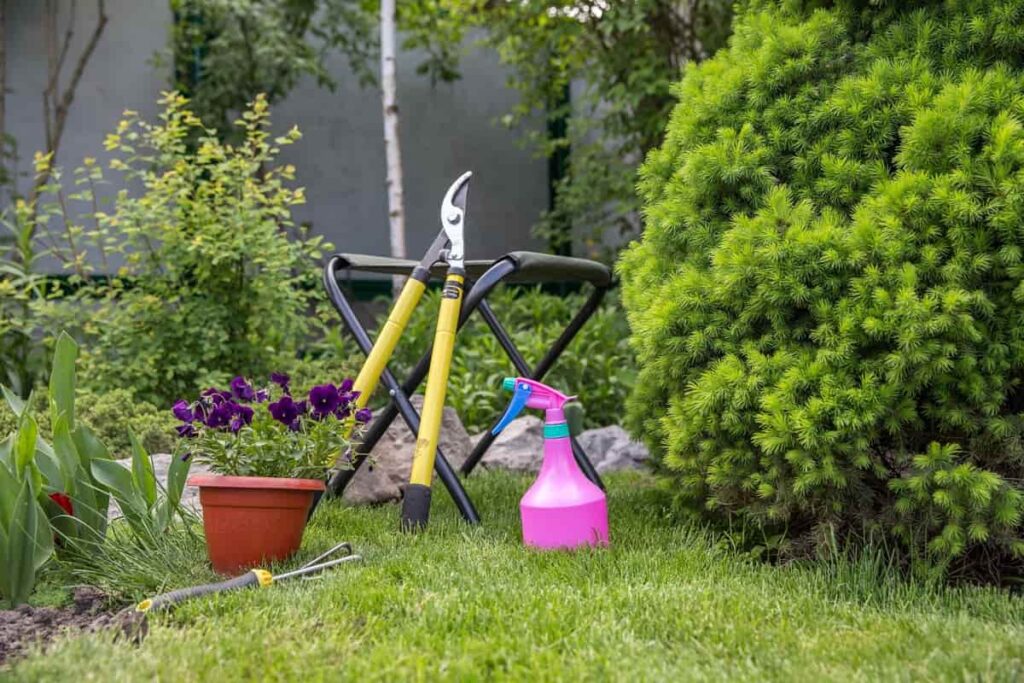
Maintain and care for your garden
The maintenance of a garden follows a seasonal pattern. The key to keeping weeds at bay in spring is to prevent them from getting a foothold. Watering the garden in the summer requires extra attention. Last but not least, fall is the time for cutting things back and cleaning up. Pay attention to what the plants tell you throughout the growing season. When a leaf is yellow or deformed, it should be clipped.
Plants that are collapsing under their weight need staking. Providing sunlight and fresh air too dense, overgrown vegetation requires careful pruning to open it up. Deficient and stressed plants are more likely to be attacked by pests and diseases. You should experience fewer pest and disease problems if your plants are well-nourished and healthy.
If your plants become infected, there is probably an organic solution available. With homemade pest control for the yard and garden, you can use plant compounds and soap to knock out pests that feast on your plants. Add some drops of dish soap to neem oil and water. Spray it on the plants once every two weeks to keep pests at bay.
Nurture with organic fertilizers
There is no better friend to a gardener than fertilizer. Give your plants an extra boost by making organic fertilizer. Compost acts like organic fertilizer that can be added to a garden to help it grow. Tea bags, ground coffee, lawn trimmings, crushed fruit peels, etc., can be used as fertilizer. As a result of adding these organic fertilizers to the soil, moisture will be retained, good bacteria will grow, and pests and diseases will be fought. Additionally, it will reduce carbon footprints.
Pruning the plants
Even though pruning can be hard to swallow for gardeners, regular pruning keeps most plants healthy and encourages new growth. Depending on the climate and the type of plant, when and what to prune will vary. During the late winter or early spring, flowering and fruiting plants benefit from being cut back to promote healthy growth. Once the old flowers fall, trees and shrubs start setting new buds, so it is essential to prune them before the new buds appear in the spring. To remain healthy, many plants require constant trimming.
In case you missed it: Cultivating High-Dollar Crops: Turn Your Gardening Skills into Serious Cash
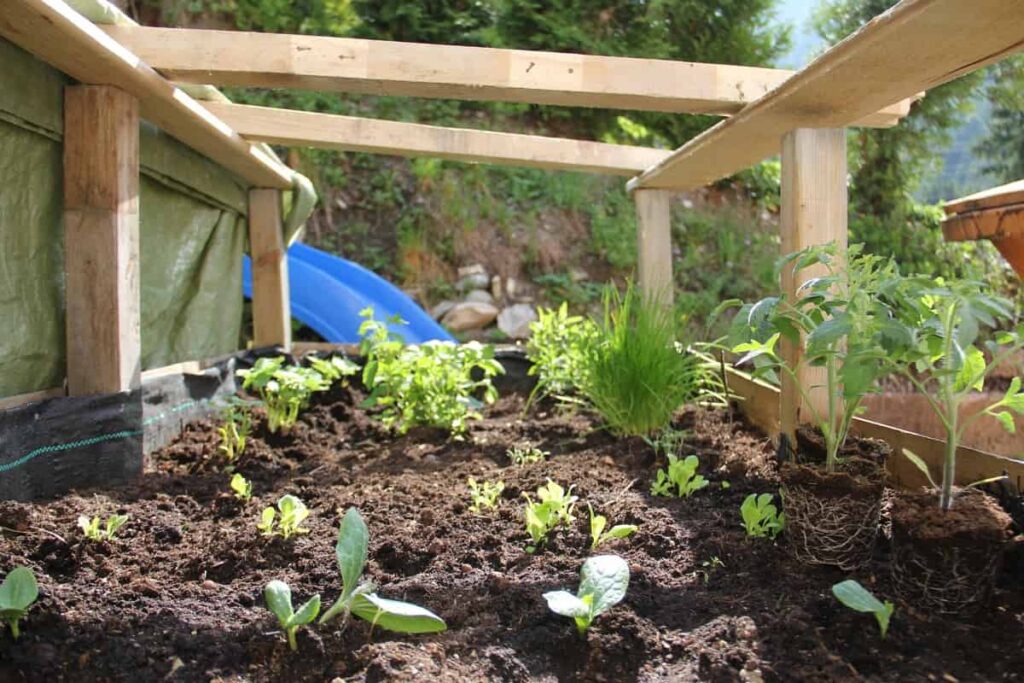
Harvesting
It is important to learn how to harvest vegetables as a new gardener so as not to damage the plants or the product. Take a look at these basic harvesting guidelines before heading out to the garden:
- Pick gently: Harvesting vegetables should be done gently but firmly. It is easy for ripe produce to bruise, leading to premature spoilage.
- Snap cleanly: Some vegetable stems have a natural breaking point, while others may rip or tear when the fruit is removed. Ensure the cut is clean by using scissors or a knife. Future yields can be reduced if the plant is damaged.
- Step carefully: When moving around the garden, it’s easy to step on vines; this damages the plant and allows diseases to enter.
- Use a basket: During harvest and transport, baskets protect the product from damage. For vegetable harvesting, low, long baskets are preferred. Produce at the bottom can be damaged by taller containers due to the column of weight they create.
- Check regularly: Vegetables grow and reach maturity faster when the weather is warm and sufficient rainfall. Therefore, keep an eye on the garden daily to prevent vegetables from becoming overripe.
Conclusion
Backyard gardening could contribute to decentralizing the supply of fresh food, sequestering carbon from local organic matter, such as tree prunings, and recycling nutrients. In many cases, gardening would provide consumers with personal relaxation and satisfaction, as well as some control over their food supply.
- Management Pests and Diseases in Your Cotton Field
- Sheep Farming Business Plan for Beginners
- Aquaponic Farming at Home: A Step-By-Step Guide
- Profitable Village Farming Business Ideas in 2024
- High-Yield Aquaculture: Fast-Growing Fish for Farming
- Effective Fish Pond Construction Techniques for Beginners
- Irrigation and Water Management in Pineapple Farming
- Blossom to Harvest: Mastering Flowering and Pollination in Papaya Farming
- Pig Fattening Essentials: From Selection to Sale for Beginners
- Raising Wagyu Cattle: A Complete Guide for Premium Beef Production
- Soil Types and Their Water Holding Capacity
- Optimizing Irrigation Schedules for Coconut Groves for Enhanced Yield
- Espresso Your Garden: Coffee Grounds for Healthier Acid-Loving Plants
- The Best Soil Mix for Snake Plants: How to Mix Your Own Snake Plant Soil
- Green Thumb Success: Expert Tips for Cultivating Greenhouse Beans All Year Round
- Bloom All Year Round: The Ultimate Guide to Indoor Hyacinth Care
- Eco-Friendly Gardening: How to Make Liquid Fertilizer from Kitchen Waste
- Ultimate Guide to Grow Anise in Pots: Explore Seed Propagation to Harvesting
- Guide to Raising Chester White Pigs: Discover Breed Facts to Growth Management
- Mastering the Elegance: The Ultimate Guide to Weeping Cherry Tree Care, Planting, and Maintenance
- Ultimate Guide to Planting Garlic in Grow Bags: Growing Strategies for Beginners
- How to Fix Spider Plant Leaf-Related Problems: Natural and Organic Remedies
- 10 Reasons Why Your Tulsi Plant is Shedding Leaves: Home Remedies and Solutions
- Optimizing Growth and Yield: The Advantages of Palm Bunch Ash Fertilizer
- Utilizing Neem Oil Extract as a Natural Pesticide for Hydrangea
- From Soil to Harvest: Various Ways in Which Farmers Can Use AI Tools
- Steps to Encourage and Induce Citrus Flowers: A Comprehensive Guide
- How to Fix Snake Plant Leaf-Related Issues: Natural and Organic Remedies
- Transform Your Garden into a Fragrant Oasis with Raat Ki Rani (Night Blooming Jasmine)
- Discover the Ideal Chicken Breeds for Philippine Farms
- How to Create a Poultry Egg Farm Business Plan for Profits
- Grow Lemon Cucumbers Like a Pro: Insider Techniques for Bountiful Yields
- Ultimate Guide to Caring for Your Pink Princess Philodendron: Tips for Thriving Variegation
- Areca Nut Profit Per Acre: Calculating Yield and Cost of Cultivation
- How Kaveri Chicken is Becoming a More Profitable Breed in Indian Backyards
- Transform Your Barn: 9 Steps to Convert a Horse Stall into a Chicken Coop
